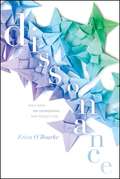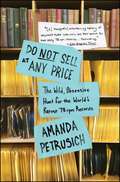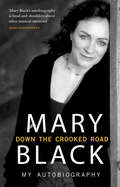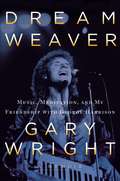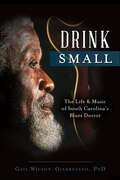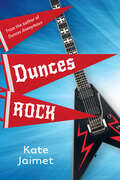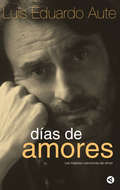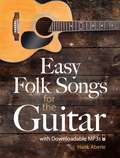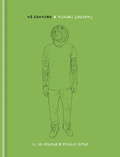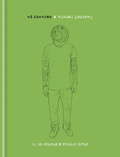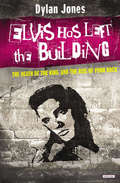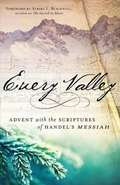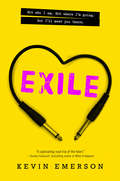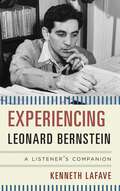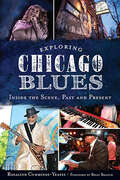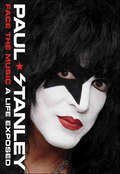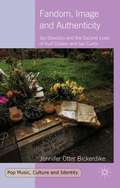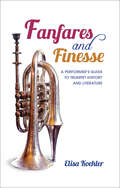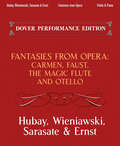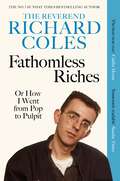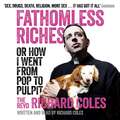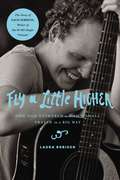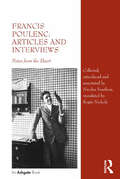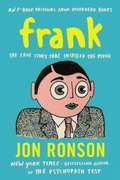- Table View
- List View
Dissonance
by Erica O'RourkeIn this inventive romantic thriller, Del has the power to navigate between alternate realities--and the power to save multiple worlds.Every time someone makes a choice, a new, parallel world is spun off the existing one. Eating breakfast or skipping it, turning left instead of right, sneaking out instead of staying in bed--all of these choices create alternate universes in which echo selves take the roads not traveled. Del knows this because she's a Walker, someone who can navigate between the worlds, and whose job is to keep the dimensions in harmony.But Del's decisions have consequences too. Even though she's forbidden from Walking after a training session goes horribly wrong, she secretly starts to investigate other dissonant worlds. She's particularly intrigued by the echo versions of Simon Lane, a guy who won't give her the time of day in the main world, but whose alternate selves are uniquely interested. But falling for Simon draws Del closer to a truth that the Council of Walkers is trying to hide--a secret that threatens the fate of the entire multiverse."O'Rourke brilliantly builds an intricate and complex alternate science-fiction universe that contains beautiful imagery and visualization. A definite page-turner." --School Library Journal
Do Not Sell At Any Price
by Amanda PetrusichThe untold story of a quirky and important subculture: The world of 78rpm records and the insular community that celebrates them--by acclaimed music critic and author Amanda Petrusich, who contributes regularly to Pitchfork, The Oxford American, and The New York Times.Before MP3s, CDs, and cassette tapes, even before LPs or 45s, the world listened to music on 78rpm records--those fragile, 10-inch shellac discs. While vinyl records have enjoyed a renaissance in recent years, good 78s are exponentially harder to come by and play. A recent eBay auction for the only known copy of a particular record topped out at $37,100. Do Not Sell at Any Price explores the rarified world of the 78rpm record--from the format's heyday to its near extinction--and how collectors and archivists are working frantically to preserve the music before it's lost forever. Through fascinating historical research and beguiling visits with the most prominent 78 preservers, Amanda Petrusich offers both a singular glimpse of the world of 78 collecting and the lost backwoods blues artists whose 78s from the 1920s and 1930s have yet to be found or heard by modern ears. We follow the author's descent into the oddball fraternity of collectors--including adventures with Joe Bussard, Chris King, John Tefteller, Pete Whelan, and more--who create and follow their own rules, vocabulary, and economics and explore the elemental genres of blues, folk, jazz, and gospel that gave seed to the rock, pop, country, and hip-hop we hear today. From Thomas Edison to Jack White, Do Not Sell at Any Price is an untold, intriguing story of preservation, loss, obsession, art, and the evolution of the recording formats that have changed the ways we listen to (and create) music.
Down the Crooked Road: My Autobiography
by Mary BlackFor the last thirty years, singer Mary Black has been a dominant presence on the Irish music scene, an award-winning artist with many bestselling albums to her name. Now, in this long-awaited memoir, Mary takes us back to the roots of her musical heritage and to the influences that helped to shape her as an artist and a woman. Born into a musical family, Mary Black – a feisty tomboy who could hold her own when it came to sparring with her brothers and anyone else brave enough to take her on – began singing folk songs from the age of ten. Music played an important role in the family home and, performing with her brothers and her sister Frances, Mary built her highly successful career on the bedrock of these early years. From the pubs and clubs of her hometown, Dublin, she went on to perform in some of the most prestigious venues across the world. Always committed to exploring new material from the best writers, her unique talent attracted acclaim from critics, fellow artists and the public alike. It also led to a host of bestselling albums, including the multi-platinum No Frontiers, which spent more than a year in the Irish Top 30. Mary’s love of singing was matched only by the love she had for her family. As she recalls the inevitable tensions that arose when trying to juggle family life and a high-profile career, she tells of her struggle to combine the two contrasting aspects of her life. It was only through gritty determination, hard work and a fair amount of laughter that Mary was able to enjoy major success as an artist and, at the same time, raise a close and loving family with her husband Joe. Refreshingly honest, and written with warmth and humour, Down the Crooked Road offers a unique insight into the life and career of one of our most gifted singers – an artist who, during the course of her long career, has captured the hearts of millions around the world.
Dream Weaver: A Memoir; Music, Meditation, and My Friendship with George Harrison
by Gary WrightMusic legend Gary Wright reflects on his professional collaboration, friendship, and spiritual journey with "quiet Beatle" George Harrison. Best known for his multiplatinum hits "Dream Weaver" and "Love is Alive," Gary Wright came to prominence as a singer and songwriter during the golden age of rock in the 1970s. What is not as well known to the public, however, is Wright's spiritual side. At the heart of this memoir is the spiritual conversion and journey that Wright experienced alongside his close friend George Harrison. Until Harrison's death in 2001, the two spent decades together writing songs, eating Indian fare, talking philosophy, and gardening. In addition to featuring lyrics to a never-released recording of a song cowritten by Wright and George Harrison in 1971, titled "To Discover Yourself," this memoir includes a cache of never-before-seen photos. Also available is a deluxe e-book featuring an audio recording of "To Discover Yourself."
Drink Small: The Life & Music of South Carolina's Blues Doctor (Music Ser.)
by Gail Wilson-Giarratano PhDFor fans of the blues, Drink Small is synonymous with South Carolina. Drink rose from the cotton fields of Bishopville to become a music legend in the Palmetto State and beyond. The self-taught guitarist has written hundreds of songs and recorded dozens of albums spanning the genres of country, blues, folk, gospel and shag. The success of that music allowed him countless honors, such as playing the stages of the Apollo and Howard Theaters, touring with legendary R&B singer Sam Cooke and playing the best blues festivals in the world. He even developed his own philosophy: Drinkism. Author Gail Wilson-Giarratano details the dream, the music and the life that created the Blues Doctor.
Dunces Rock
by Kate JaimetThe Dunces—Josh, Magnolia, Wang and Wilmot—are back, and this time they’re going up against a formidable foe: Principal Hale, who has canceled their school’s drama and music program just when Wilmot needs it most. He has a guitar (given to him by a teen named Headcase), but no teacher and nowhere to practice (his dad hates rock ’n’ roll). The Dunces’ plan to convince Principal Hale to reinstate the program involves Josh’s reluctant participation in a hockey team, Magnolia’s enthusiastic role-playing and Wang’s disillusionment with a suspicious character named Hui Bing (aka Larry). But can the Dunces really rock, even when they rebrand themselves as Cousin Willy and the Wang Dang Doodles?
Días de amores: Las mejores canciones de amor
by LUIS EDUARDO AUTEEl amor ha sido y sigue siendo uno de los motores de la vida de Luis Eduardo Aute. Por este motivo reúne en este libro sus grandes canciones de amor, que son, en realidad, sus Días de amores, pues son el reflejo de su trayectoria vital. Luis Eduardo Aute canta al amor, pero al amor concebido como un misterio, una pregunta o una duda que estimula, unas veces visto como un estado mágico alcanzado por el ser humano y otras como una forma única, virtuosa, a la que canta y escribe en busca de argumentos; el amor como punto de partida y de llegada de toda una obra. El impulso de Aute por buscar, preguntar y escudriñar posibilidades expresivas que le permitan acercarse a la belleza y al lado desconocido de las cosas es lo que le ha llevado a hablar del amor en sus canciones sin renunciar a la ironía, al humor, a la tristeza más devastadora o a un lenguaje coloquial en contacto con la realidad de su momento.
Easy Folk Songs for the Guitar with Downloadable MP3s
by Hank AberleThis original collection presents more than 20 popular folk songs that have been specially arranged for beginning guitarists. The timeless melodies are supplemented with a helpful tutorial on guitar basics that offers tips on identifying the strings, tuning, and basic chord patterns and strums.These arrangements of Skip to My Lou, He's Got the Whole World in His Hands, Oh! Susanna, Down in the Valley, Barbara Allen, and other tunes include advice for following the time signatures, strumming patterns, and other suggestions. Best of all, each song features a free MP3 download for students to listen to and play along with. The recordings will familiarize beginning guitarists with the pieces' melodies and tempos, and provide practical guidance for playing these beloved folk songs.
Ed Sheeran: A Visual Journey
by Phillip Butah Ed Sheeran Sheeran)With words by Ed Sheeran and illustrations by his childhood friend, artist Phillip Butah (who produces artwork for Sheeran's albums and singles), and accompanying photos, Ed Sheeran: A Visual Journey is an exclusive, fully authorised, first-person account by Ed of how he became an internationally renowned singer-songwriter.In the book, Ed explores his early musical experiences and influences as well as his time recording and touring, right up to the release of his second album, 'x'. The book reveals what drives and inspires Ed as he continues to evolve as an artist, while coping with stratospheric success, and is an honest account of what it takes to make it in the music business.With Phillip Butah's distinctive portraits of Ed throughout, this is a unique book celebrating a unique musician. It includes Ed's recollections of working tirelessly on the London gig circuit and self-releasing EPs, working hard on finding his sound, signing to Asylum Records and recording his huge hit album, '+', performing at the Grammys, touring with Taylor Swift and sell-out headline gigs at Madison Square Garden. It takes us up to Ed as a musician today, including recording his new album, 'x'.
Ed Sheeran: A Visual Journey
by Phillip Butah Ed Sheeran Sheeran)**This enhanced edition includes behind-the-scenes videos of the making of the book and an exclusive message from Ed.** With words by Ed Sheeran and illustrations by his childhood friend, artist Phillip Butah (who produces artwork for Sheeran's albums and singles), and accompanying photos, Ed Sheeran: A Visual Journey is an exclusive, fully authorised, first-person account by Ed of how he became an internationally renowned singer-songwriter. In the book, Ed explores his early musical experiences and influences as well as his time recording and touring, right up to the release of his second album, 'x'. The book reveals what drives and inspires Ed as he continues to evolve as an artist, while coping with stratospheric success, and is an honest account of what it takes to make it in the music business. With Phillip Butah's distinctive portraits of Ed throughout, this is a unique book celebrating a unique musician. It includes Ed's recollections of working tirelessly on the London gig circuit and self-releasing EPs, working hard on finding his sound, signing to Asylum Records and recording his huge hit album, '+', performing at the Grammys, touring with Taylor Swift and sell-out headline gigs at Madison Square Garden. It takes us up to Ed as a musician today, including recording his new album, 'x'.
Elvis Has Left the Building: The Death of the King and the Rise of Punk Rock
by Dylan Jones&“An interesting look at how 1977 marked the explosion of punk alongside this heartbreaking (though not altogether surprising) loss of a legend&” (USA Today). In the late 1970s, punk music was setting out to destroy everything Elvis Presley had come to represent. But punk couldn&’t destroy The King himself—he had already done that, succumbing to his excesses at Graceland on August 16, 1977. Ever since, Elvis has permeated the world in ways that are bizarre and inexplicable: a pop icon while alive, he has become almost a religious icon in death, a modern-day martyr crucified on the wheel of drugs, celebrity culture, junk food, and sex. In Elvis Has Left the Building, Dylan Jones takes us back to those heady days around the time of his death and the simultaneous rise of punk. Evoking the hysteria and devotion of The King&’s numerous disciples and imitators, Jones offers a uniquely insightful commentary on Elvis&’s life, times, and outrageous demise. Recounting how the artist single-handedly changed the course of popular music and culture, he also delves deep into the cult of The King and reveals what Elvis&’s death meant—and still means to us today. &“I&’m not sure punk would have existed without [Elvis]. In fact I&’m not sure a lot of things would have existed without him. Dylan Jones is the right man to ponder such questions.&” —Bono &“A gripping tale of impossible success and terrible waste and lost beauty that veers from Memphis to Las Vegas and all the way to the broken backstreets of London.&” —Tony Parsons, author of The Hanging Club
Every Valley
by George Frideric HandelGeorge Frederic Handel wrote his most famous oratorio, Messiah, in a little over three weeks. There is little doubt that this work is one of the most famous and often performed choral pieces in history. Handel conducted many performances in his day and there never seemed to have been a period when the work was not played. These selections feature the tenor voice of the quintet - the euphonium (or trombone).
Exile: Exile #1
by Kevin EmersonKevin Emerson's Exile combines the swoon-worthy romance of a Susane Colasanti novel with the rock 'n' roll of Eleanor & Park. Summer Carlson knows how to manage bands like a professional--minus the whole falling-for-the-lead-singer-of-the-latest-band part. But Caleb Daniels isn't an ordinary band boy--he's a hot, dreamy, sweet-singing, exiled-from-his-old-band, possibly-with-a-deep-dark-side band boy. She also finds herself at the center of a mystery she never saw coming. When Caleb reveals a secret about his long-lost father, one band's past becomes another's present, and Summer finds it harder and harder to be both band manager and girlfriend. Maybe it's time to accept who she really is, even if it means becoming an exile herself. . . .
Experiencing Leonard Bernstein: A Listener's Companion
by Kenneth LaFaveLeonard Bernstein is a household name. Most know him for his classic musical reworking of Shakespeare’s Romeo and Juliet as Broadway’s West Side Story. But Bernstein accomplished so much more as a composer, and his body of work is both broad and varied. He composed ballets (Fancy Free, Facsimile, Dybbuk), operas (Trouble in Tahiti, Candide, A Quiet Place), musicals (On the Town, Wonderful Town), film scores (On the Waterfront), symphonies, choral works, chamber music pieces, art songs, and piano works. In Experiencing Leonard Bernstein: A Listener’s Companion, Kenneth LaFave guides readers past Bernstein’s famously tortured personal problems and into the clarity and balance of his Serenade after Plato’s Symposium for Violin and Orchestra, the intense drama of his music for On the Waterfront, the existential cosmography of his three symphonies, and his vibrant works for the musical stage. Perhaps the most famous American classical musician born in the twentieth century, Bernstein divided his time between c
Exploring Chicago Blues: Inside the Scene, Past and Present (Music Ser.)
by Rosalind Cummings-YeatesDiscover the living legacy of Chicago Blues in this guide to the iconic clubs and musicians who made—and keep making—music history.During the Great Migration, African Americans left Mississippi for Chicago, and they brought their music traditions with them. The music took root in the city and developed its own distinctive sound. Today, Chicago Blues is heard all over the world, but there&’s no better place to experience it than in the city where it was born. In Exploring Chicago Blues, Chicago music writer Rosalind Cummings-Yeates takes you inside historic blues clubs like the Checkerboard Lounge and Gerri's Palm Tavern, where folks like Muddy Waters, Howlin' Wolf, Willie Dixon and Ma Rainey transformed Chicago into the blues mecca. She then takes you on an insider&’s tour of the contemporary blues scene, introducing the best spots to hear the purest sounds of Sweet Home Chicago.
Face the Music: A Life Exposed
by Paul StanleyThe rock icon and co-founder of KISS recounts his turbulent life behind the face paint in this New York Times bestselling memoir.With his onstage persona, the “Starchild”, Paul Stanley made rock & roll history—thrilling countless fans with hard rock anthems and elaborate stage shows. But his famous makeup hid a difficult life. In Face the Music, Stanley shares a gripping blend of personal revelations and gritty war stories about the highs and lows both inside and outside of KISS. Born with a condition called microtia (an ear deformity rendering him deaf on the right side), Stanley's traumatic childhood experiences produced an inner drive to succeed in the most unlikely of places: music. Taking readers through the series of events that led to the founding of KISS, the personal relationships that helped shape his life, and the dynamics among his bandmates, this book leaves no one unscathed—including Stanley himself.With never-before-seen photos and images throughout, Face the Music is a colorful portrait of a man and the band he helped create, define, and sustain—made larger than life in artfully told stories that are shocking, funny, inspirational, and honest.
Fandom, Image and Authenticity
by Jennifer Otter BickerdikeKurt Cobain and Ian Curtis. Their early and unexpected deaths propelled them to iconic status, as beacons for the values of individuality and authenticity. However, with each passing year, the images of the lead men become further removed from their original humanity. From Converse to cake, this book examines how their 'brands' lend credibility to commerce, while the increasing worth placed on the singers provides a modern example of a secular belief system propelled by media, technology and the value of immediacy in the 2. 0 world. Journeys to spaces and places associated with the two singers are akin to pilgrimages, sacred trips that hope to capture and connect with the very essences that the men have been stripped of in their ever-widening appeal. Within this context, Curtis and Cobain become guides and Anglicised role models in the search for personal identity and community in the modern uncertain world.
Fanfares and Finesse: A Performer's Guide To Trumpet History And Literature
by Elisa KoehlerUnlike the violin, which has flourished largely unchanged for close to four centuries, the trumpet has endured numerous changes in design and social status from the battlefield to the bandstand and ultimately to the concert hall. This colorful past is reflected in the arsenal of instruments a classical trumpeter employs during a performance, sometimes using no fewer than five in different keys and configurations to accurately reproduce music from the past. With the rise in historically inspired performances comes the necessity for trumpeters to know more about their instrument's heritage, its repertoire, and different performance practices for old music on new and period-specific instruments. More than just a history of the trumpet, this essential reference book is a comprehensive guide for musicians who bring that musical history to life.
Fantasies from Opera for Violin and Piano: Carmen, Faust, The Magic Flute and Otello (Dover Chamber Music Scores)
by Pablo De Sarasate Henryk Wieniawski Max Ernst Jeno HubayThis single-volume compilation features four popular opera fantasies arranged for violin with piano accompaniment. Each of these frequently performed pieces was arranged by a world-class artist and offers the convenience of a separate violin part: Carmen Fantasy from the Opera by Georges Bizet,Op. 25, transcribed by Jenö HubayFantasia on Themes from Gounod's Faust,Op. 20, transcribed by Henri WieniawskiFantasie from Mozart's The Magic Flute,Op. 54, transcribed by Pablo SarasateFantasie Brillante on the March and the Romance from Rossini's Otello, Op. 11, by Heinrich Wilhelm ErnstThis collection is ideal for practice, performance, teaching, and independent study by students, professional performers, and amateur ensembles.
Fathomless Riches: Or How I Went From Pop to Pulpit
by Richard ColesThe Reverend Richard Coles is a parish priest in Northamptonshire and a regular host of BBC Radio 4's Saturday Live. He is also the only vicar in Britain to have had a number 1 hit single: the Communards' 'Don't Leave Me This Way' topped the charts for four weeks and was the biggest-selling single of its year. Fathomless Riches is his remarkable memoir in which he divulges with searing honesty and intimacy his pilgrimage from a rock-and-roll life of sex and drugs to a life devoted to God and Christianity. Music is where it began. Richard Coles was head chorister at school, and later discovered a love of saxophone together with the magic of Jimmy Somerville's voice. Against a backdrop of intense sexual and political awakening, the Communards were formed, and Richard Coles's life as a rock star began. Fathomless Riches - a phrase characteristic of St Paul and his followers - is a deeply personal and illuminating account of a transformation from hedonistic self-abandonment to 'the moment that changed everything'. Funny, warm, witty and wise, it is a memoir which has the power to shock as well as to console. It will be hailed as one of the most unusual and readable life stories of recent times.
Fathomless Riches: Or How I Went From Pop to Pulpit
by Reverend Richard ColesThe memoir of popular BBC Radio 4 SATURDAY LIVE presenter and former member of the Communards, the Reverend Richard Coles.'I love @RevRichardColes SO MUCH' Caitlin MoranFATHOMLESS RICHES is the Reverend Richard Coles's warm, witty and wise memoir in which he divulges with searing honesty and intimacy his pilgrimage from a rock-and-roll life of sex and drugs in the Communards to one devoted to God and Christianity. The result is one of the most unusual and readable life stories of recent times, and has the power to shock as well as to console.
Fathomless Riches: Or How I Went From Pop to Pulpit
by Reverend Richard ColesA parish priest in Northamptonshire; a former rock-star whose number-one hit with The Communards was the biggest-selling single of 1986; the regular host of BBC Radio 4's SATURDAY LIVE - these three people are not usually embodied in one person. The Reverend Richard Coles' memoir offers his rich and personal insights into one of the most diverse of lives, encompassed with the wit and humour he brings to his popular radio show. Richard Coles gives the phrase 'time management' a new emphasis. From conducting the funeral of a cross-dressing farmer and recording an interview with a Californian who believes he was abducted by aliens, to a lunch meeting with the Mothers Union, then making an after-dinner speech to a roomful of thoughtful actuaries, his work has taken him from food-fights in a Swiss hotel with the Beastie Boys to propitiating the gods of the sea as Deputy Chaplain to the Admiral of the Wash on his annual inspection of the Beacons and Buoys.Mirroring the Christian calendar with its narrative of birth, death and renewal, from Advent to Christmas, from Lent to Easter, Richard Coles gives an honest and lighthearted account of the drama that comes with fulfilling so many roles, and the daily challenges that accompany it.Fathomless Riches - a phrase characteristic of St Paul and his followers - is the indescribable generosity, love and sheer surprise that Richard Coles encounters through a life of faith. The result is one of the most readable and illuminating autobiographies of the year.Read by the author(p) 2014 Orion Publishing Group
Fly a Little Higher: How God Answered One Mom's Small Prayer in a Big Way
by Laura SobiechLaura Sobiech tells the amazing story of how God used her son's battle with cancer to touch the lives of millions. "Okay, Lord, you can have him. But if he must die, I want it to be for something big. I want someone's life to be changed forever. " This is what Laura Sobeich prayed when she found out her seventeen-year-old son had only one year to live. With this desperate prayer, she released her son to God's will. At that point, Zach Sobiech was just another teenager battling cancer. When his mother told him to think about writing good-bye letters to family and friends, he decided instead to write songs. One of them, "Clouds," captured hearts and changed not one life but millions, making him an international sensation. He produced a full-length EP, written and performed by Zach and his lifelong friend, Sammy, including a personal goodbye song to each other. The day of Zach's funeral, "Clouds" was the #1 downloaded song on iTunes, and the EP rose to #2. The music video now has more than 7 million views on YouTube, and the documentary Soul Pancake released on Zach's eighteenth birthday has more than 9 million views. But Zach's story is not just about music. It's a testament to what can happen when you live as if each day might be your last. It's a story about the human spirit. It's about how God used a dying boy from a small town in Minnesota to touch the hearts of millions-including top executives in the music industry, major music artists, news anchors, talk show hosts, actors, priests and pastors, and school children across the globe. Zach once said, "I want to be known as the kid who went down fighting, and didn't really lose. " Fly a Little Higher is about how God used Zach to do something big.
Francis Poulenc: Notes from the Heart
by Roger Nichols Nicolas Southon’He plays the piano well,’ wrote the society hostess Mme de Saint-Marceaux in her diary on 18 March 1927. ’His compositions are not devoid of talent but he’s not a genius, and I’m afraid he thinks he is.’ Intelligent though the lady was, she got this one spectacularly wrong. Poulenc has in fact outpaced his colleagues in Les Six by many a mile, as singers and instrumentalists all over the world will attest, and while he would never have accepted the title of ’genius’, preferring ’artisan’, a genius is increasingly what he appears to have been. Part of the answer lay in always being his own man, and this independence of spirit shows through in his writings and interviews just as brightly as in his music, whether it’s boasting that he’d be happy never to hear The Mastersingers ever again, pointing out that what critics condemn as the ’formlessness’ of French music is one of its delights, voicing his outrage at attempts to ’finish’ the Unfinished Symphony, writing ’in praise of banality’ - or remembering the affair of Debussy’s hat. And in every case, his intelligence, humour and generosity of spirit help explain why he was so widely and deeply loved. This volume comprises selected articles from Francis Poulenc: J’écris ce qui me chante (Fayard, 2011) edited by Nicholas Southon. Many of these articles and interviews have not been available in English before and Roger Nichols's translation, capturing the very essence of Poulenc’s lively writing style, makes more widely accessible this significant contribution to Poulenc scholarship.
Frank
by Jon RonsonFrom the bestselling author of The Psychopath Test comes a characteristically humorous story of a musician on the margins. In Frank: The True Story that Inspired the Movie, Jon Ronson reflects on his days playing keyboard for the Frank Sidebottom Oh Blimey Big Band. Frank Sidebottom, best known for performing with a big fake head with a cartoon face painted on it, was a cult favorite in the United Kingdom and is the subject of the new movie Frank, co-written by Ronson and starring Michael Fassbender, Maggie Gyllenhaal, and Domhnall Gleeson.
